Last Sunday, I saw the film “Stray Dogs of Talad Noi” at Filmhuis Den Haag. It wasn’t just a film, but a live performance of the film’s story, its background, and history, narrated by the filmmaker himself. We were given plastic clip-on glasses for the colors, but we only wore them briefly at the beginning.
For five years, Gerard Holthuis filmed people around the River View Guesthouse in Bangkok’s Talad Noi district. Kai, a single mother, works there around the clock, making ends meet by collecting trash for recycling. Aa is the guesthouse’s handyman and, in his free time, helps a monk solicit alms. They share a love for the neighborhood stray dogs and cats, feeding them their scraps.
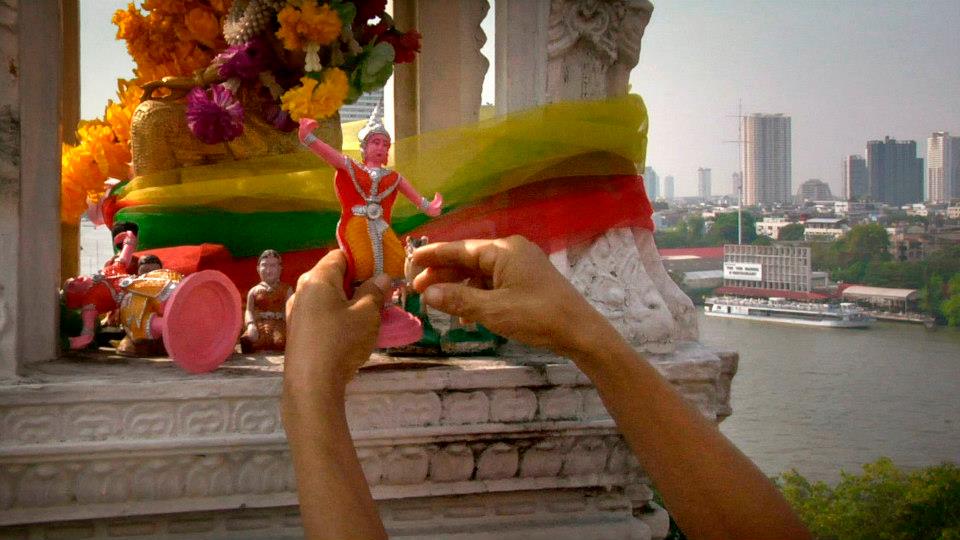
Thursday is orange
We were shown a short film clip followed by an explanation from Gerard Holthuis, and occasionally he also read an excerpt from his diary. In addition, between clips, the entire screen was filled with a bright color, reflecting its Thai significance.
Holthuis: “Monday is yellow, Tuesday is pink, Wednesday is green, Thursday is orange, Friday is light blue, Saturday is purple, and Sunday is red.” Originally from Blerick, Limburg, Holthuis immediately felt at home at the Guesthouse. In fact: “I’ve never felt more at home anywhere than here.”
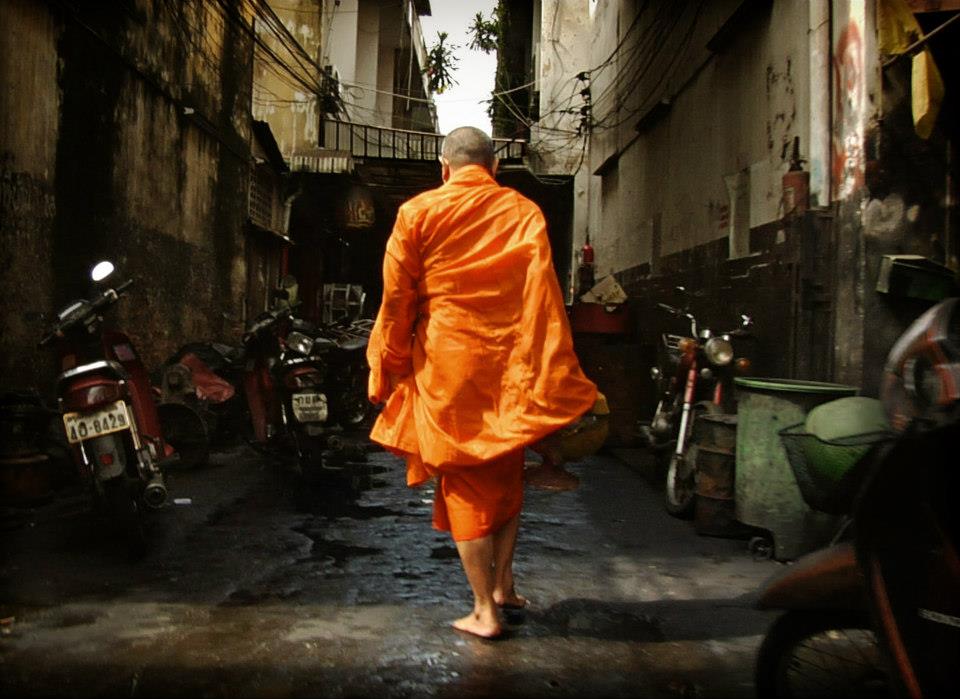
Watching others is watching yourself.
We see the large table with food for all the staff. “Look at this, it’s so delicious!” The television is on, and a staff member is swaying her hips to the music. We follow Aa, the ‘handyman, Kai, who runs everything, and the monk and a few of his fellow monks in their daily activities.
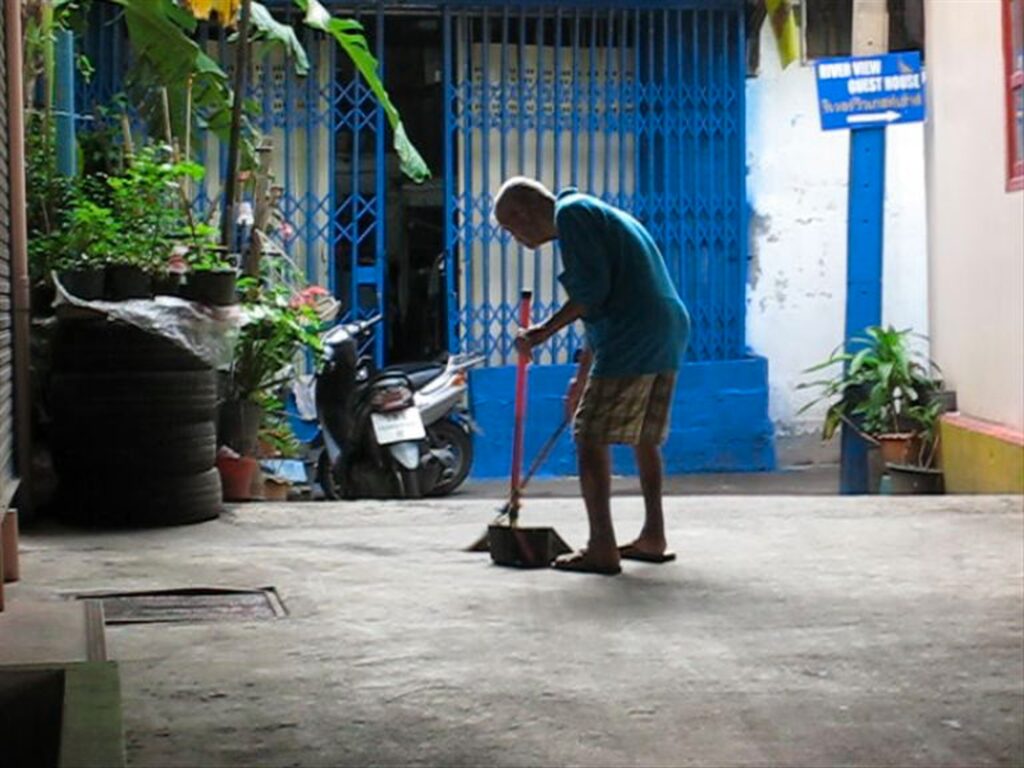
Holthuis: “For the first year, I had a tiny camera, essentially a still camera, or at least that’s what it looked like, and that’s how the people I filmed reacted: they’d make a funny little gesture and think they were in the picture. I only filmed when I felt like it. And I didn’t have a real script. I just watched the people, and watching others is watching yourself.”
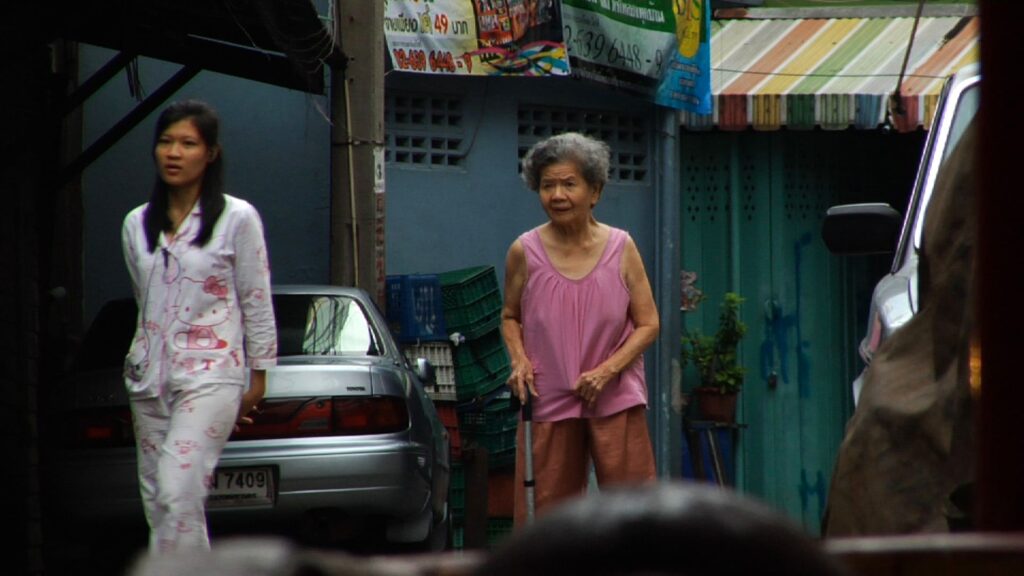
Red T-shirts
We go up to the roof with Kai and Aa, enjoying a magnificent view of the city with the Chao Phraya River, several tall buildings, and a few pagodas. We see many dogs and cats. During the monsoon season, water slowly wells up from the drains, forcing everyone to paddle through the streets.
At the end of the film, we see the procession of people dressed in red T-shirts making their way to the city squares by moped, scooter, or open-top bus. It’s almost a carnivalesque, festive procession. But for a moment, it’s still tense. There are makeshift barricades, and shots are fired. We see clips from the front pages of Thai newspapers depicting people who have been shot.
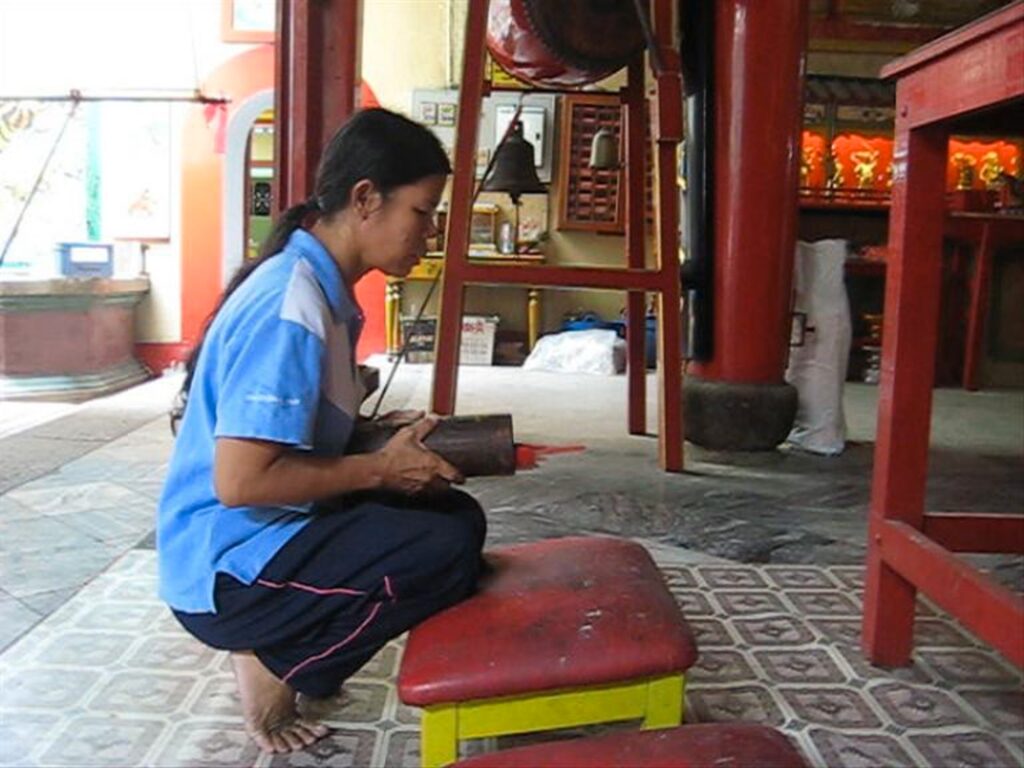
Free Academy The Hague (Vrije Academie Den Haag)
Holthuis: “I was tempted to go along. At that point, I’d had enough of Thailand.” The events also had a negative impact on the number of guests, which dropped significantly, so that one staff member after another was temporarily no longer employed by the Chinese guesthouse owner, who is invisible throughout the film.
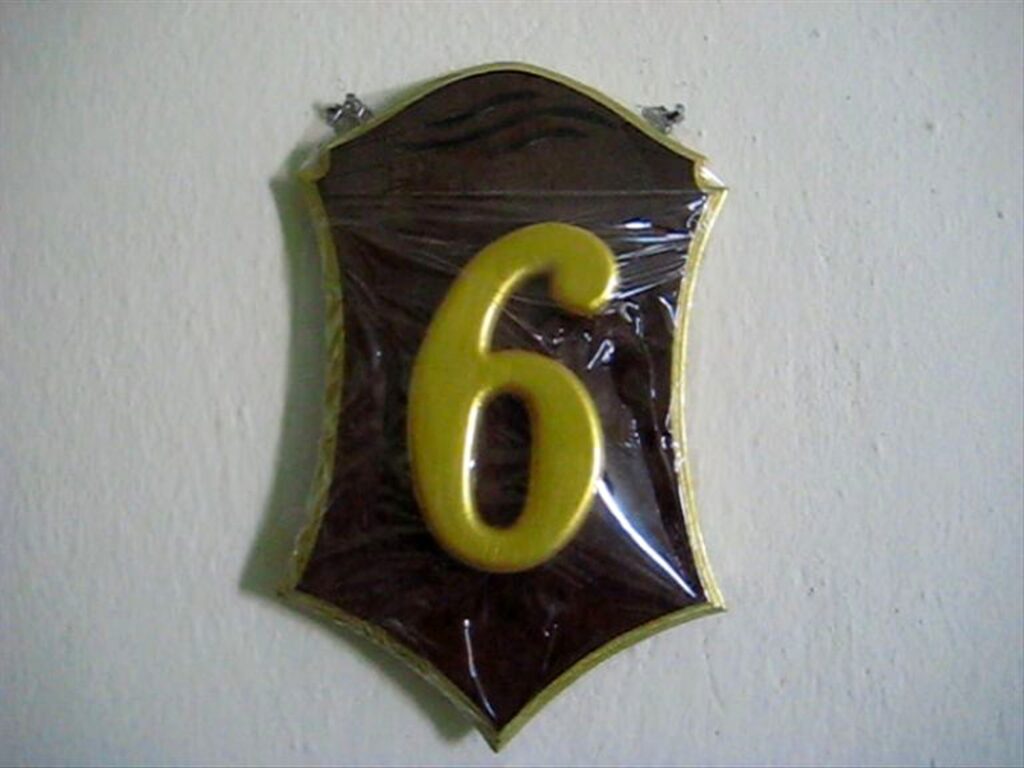
I quickly looked on Google for other films and artworks by Gerard Holthuis. I saw that he trained as a sculptor but also attended workshops at the Free Academy in The Hague. Around 1980, he made the films ; ‘Remember’ and ‘Fiction’, about the artistic inspiration and the threat of nuclear energy, respectively. In the 1990s, he made films that visually interpreted reality, such as ‘HKG’, about air traffic over Hong Kong, and the underwater world in the films ‘Careless Reef’.
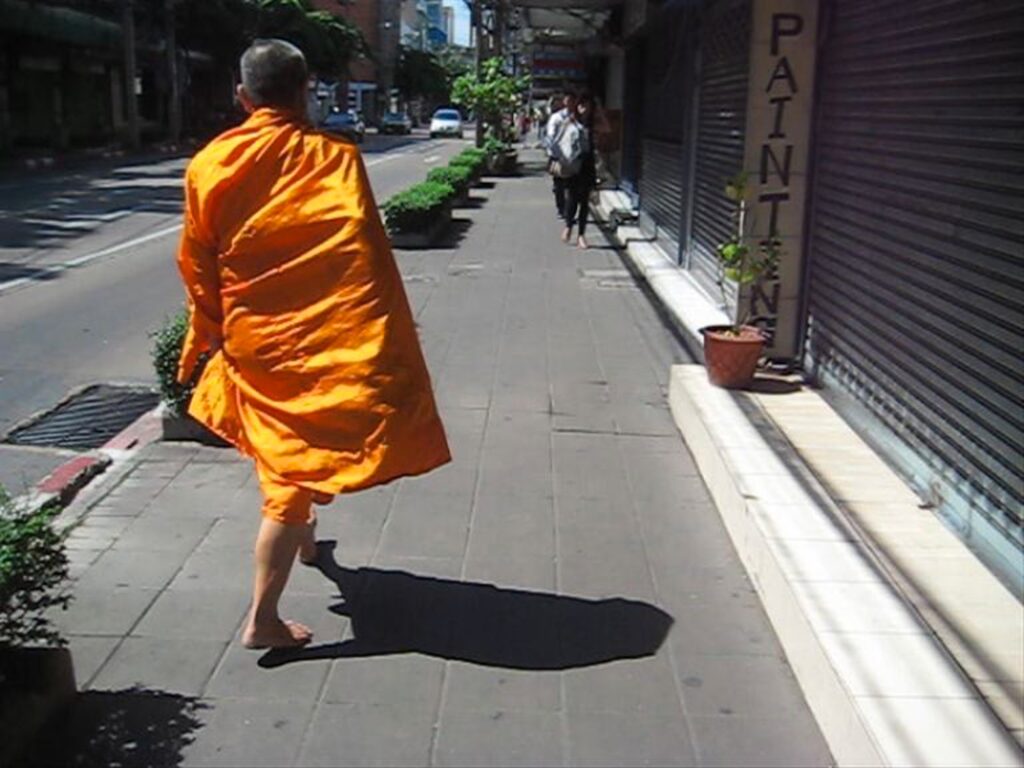
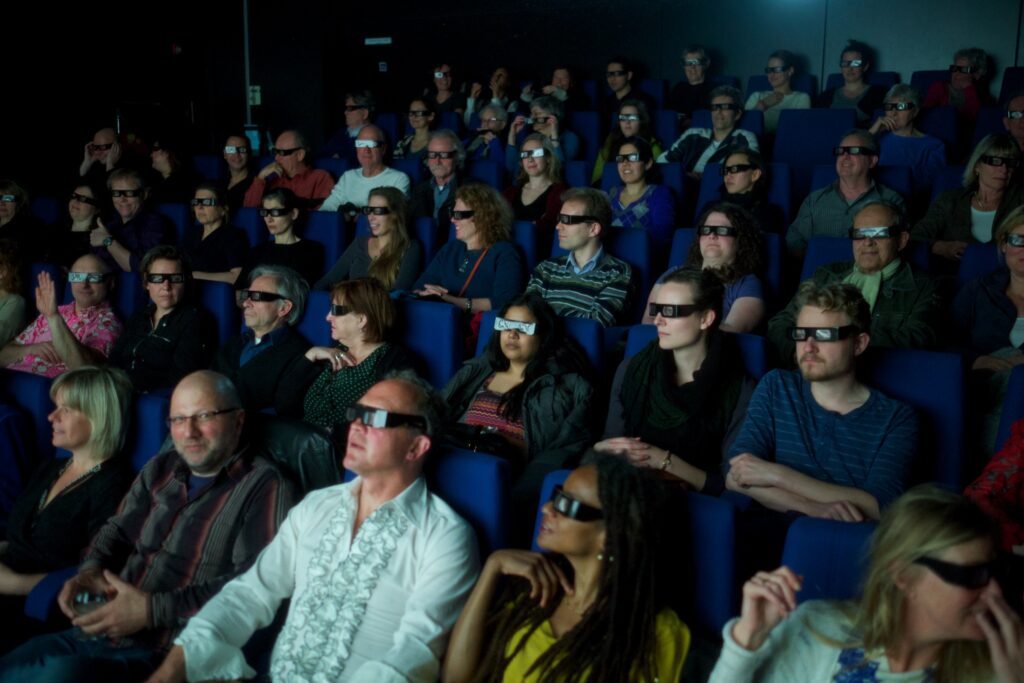
First published 2015.
http://www.michielmorel.nl/de-filmografie-van-gerard-holthuis/
https://kortefilmpoule.eyefilm.nl/content/gerard-holthuis
https://www.filmfestival.nl/persoon/gerard-holthuis
https://www.facebook.com/gerard.holthuis/?locale=nl_NL
https://inzaken.eu/index.php/2024/09/06/gerard-holthuis-filmend-in-de-wijk-talad-noi-in-bangkok-thailand/

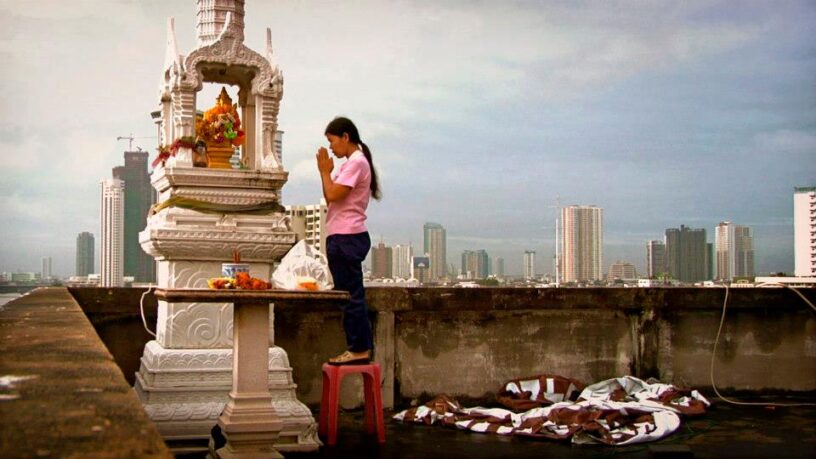
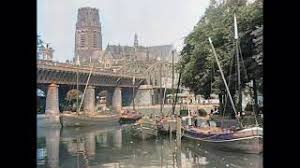
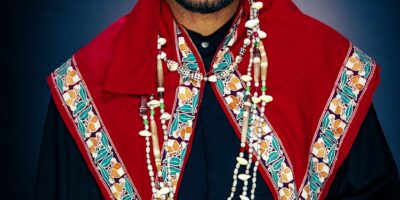
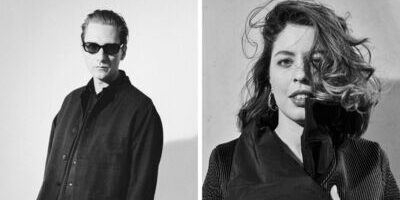



Leave a Reply